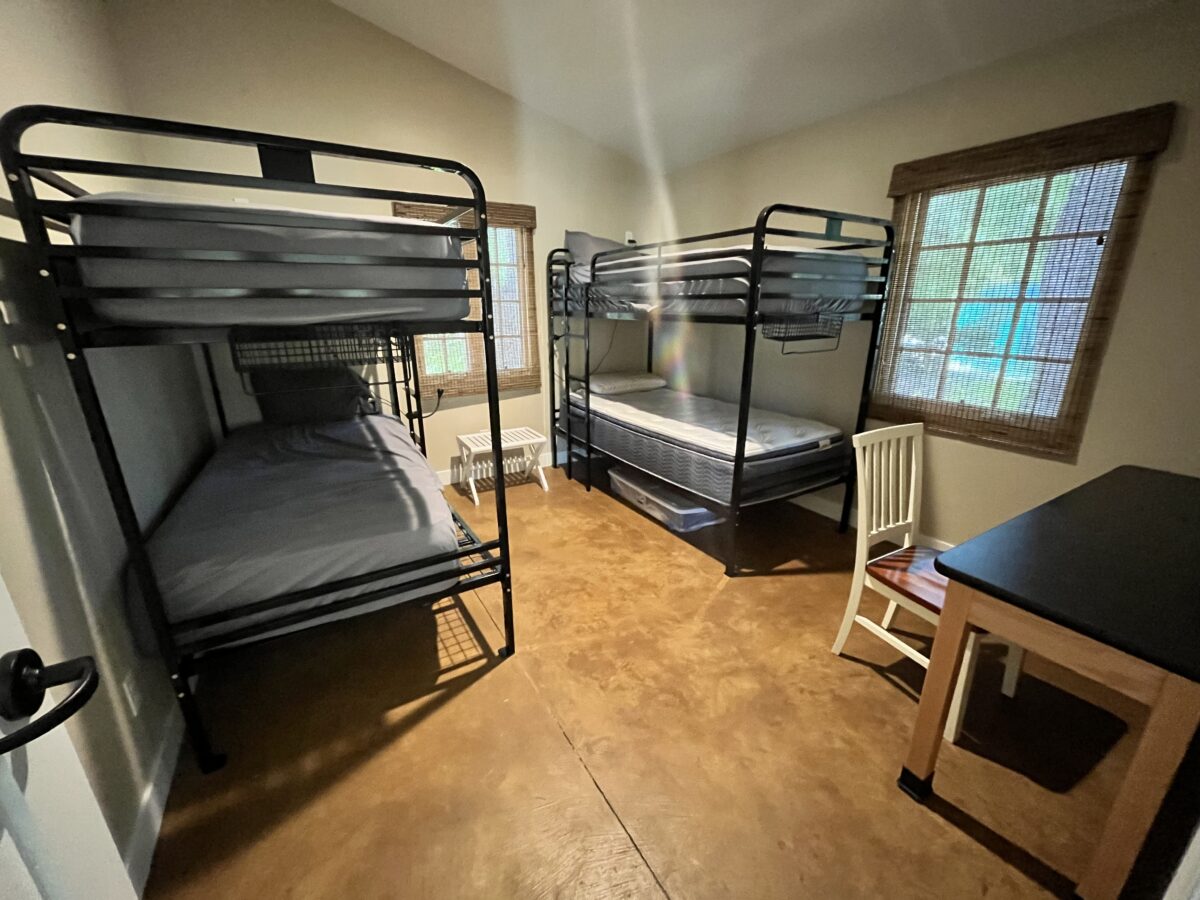
Reserve staff and volunteers are committed to the wise stewardship of the Reserve’s 5,865 acres, including the infrastructure of the 10-acre field station. The careful and responsible management of the Reserve includes but is not limited to trail and road maintenance, ecological restoration, facility management, and fireproofing.
Trail and Road Maintenance
Sedgwick contains 20.2 miles of trails and 23.36 miles of roads in a network that allows users access to this unique and scientifically-significant landscape. Weather conditions can greatly affect road and trail conditions, but consistent researcher and student access to the Reserve is vital to maintain. Each year, Reserve Stewards and volunteers embark on hundreds of hours of trail maintenance, which includes clearing downed trees, mowing, weed whacking, trimming, debris removal, and generally staying aware of current conditions to advise users on access.
Restoration
In the 1990s, critical research based at Sedgwick around oak tree mortality sparked a movement to plant and care for young oaks at the Reserve, helping ensure more of them make it to old age. Sedgwick Reserve’s Oakies are responsible for planting and caring for hundreds of oak trees and other native species around the field station. In 2023, they began work in Angela’s grove, part of an old farm field on the property, with a goal to eventually reforest the land, add understory plants, and make it an accessible education forest.
Facility Management
The ten-acre field station includes the ranch house, bunkhouse, classroom and studio, four tent cabins, camp bathrooms and showers, outdoor kitchen, Tipton Meeting House, multiple quonset huts and maintenance barns, and the 1908 barn. Due to generous donations from Linda La Kretz-Duttenhaver the Ranch House was completely remodeled and updated in 2017, the bunkhouse was built in 2019, and the La Kretz Center for Research at Sedgwick Reserve was built in 2019. Due to a generous donation from Nancy and Joe Byrne through the J.E. and Lillian Tipton Foundation, the Tipton Meeting House was built in 2011. Reserve staff ensure the cleaning and maintenance of all these all these facilities and the infrastructure that keeps it running (e.g. waterlines, propane, electricity, etc.). Collectively, these buildings serve a base camp for researchers, students, and professionals as they venture out into the Reserve for research and education.
Fireproofing

Sedgwick Reserve’s wildfire mitigation activities could be divided into vegetation management, fire hardening, education, and research. Sedgwick Reserve has a 10-year vegetation management plan that includes prescribed burns conducted in all the areas adjacent to private properties. Sedgwick Reserve holds an annual Prescribed Burning Training Exchange (TREX) where fire practitioners, landowners, agency personnel, tribes, and others can gain skills in using prescribed fire as a tool to mitigate wildfire risk.
Each year, Sedgwick Reserve hosts the prescribed burn and associated trainings and lectures. The Reserve provides free room and board to all TREX participants. In addition to this important work, Sedgwick Reserve has enlisted a slew of researchers who are studying various elements of the prescribed fires, furthering the state of knowledge on how to use good fire on the landscape. Several newsletter articles provide further information on research around our TREX prescribed burns: Prescribed Burning at Sedgwick Integrates Community Objectives and Research Advances (December 2022) and Fire Research Continues at Sedgwick Reserve: Researchers collect pre-burn data for the upcoming TREX prescribed burn this fall (September 2023).
Reserve staff spend over twelve-hundred hours each year in fire mitigation efforts that include weed abatement, mowing, weed trimming, and lifting trees. Weeds are trimmed around buildings, fences, gates, parking areas, solar arrays, troughs, water tanks and weather stations. Weeds are abated and trimmed by hand near all buildings, weather stations, propane tanks, and infrastructure. Fallen branches and plant debris are removed from roads and near buildings. Gutters and composite are kept clear of debris and combustible material. Trees are lifted to be a minimum of 16 feet within the field station, near all buildings and infrastructure, and on all main roads. Mowing is a constant project, particularly after heavy rain years. The following areas are mowed regularly and repeatedly: roads, around buildings, parking areas, Lisque Road near residence property line, turn arounds, selected research plots, solar panels, and other infrastructure.
In addition education is a critical part of ensuring safety in the Reserve. Every visitor who goes out into the field has a carefully approved request for activities in the reserve where reserve management ensure no hazardous materials or activities will be taking lace. Before going out into the field, users are educated on the dangers of parking in tall grass and are required to carry a fire extinguisher. We maintain a set of fire extinguishers for visitors to borrow. We hold regular safety inspections with Nargan to make sure all our fire extinguishers and sprinklers are in working order.
Have questions about the recent Lake Fire? See our FAQ Page.



































